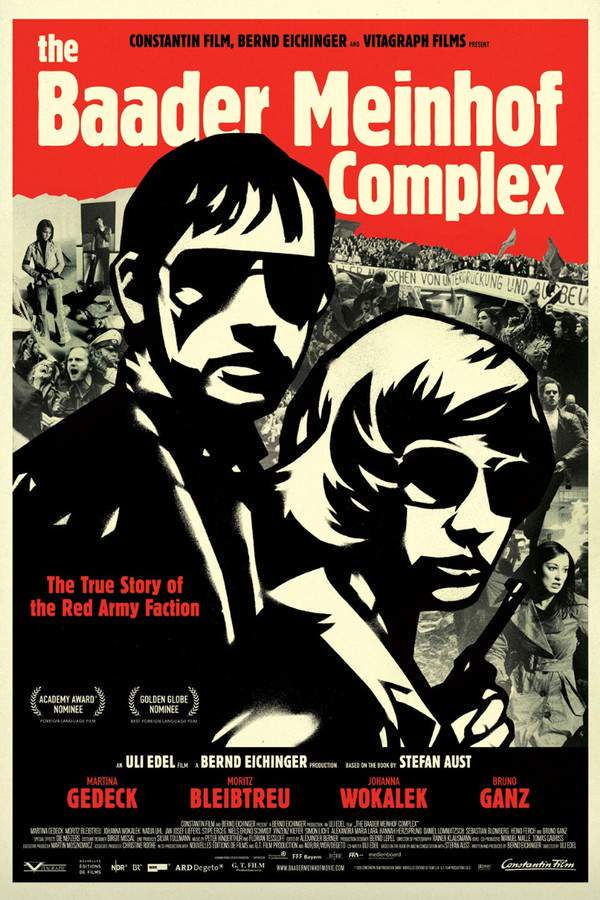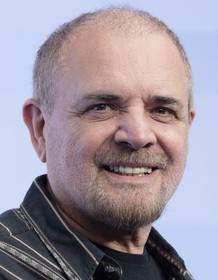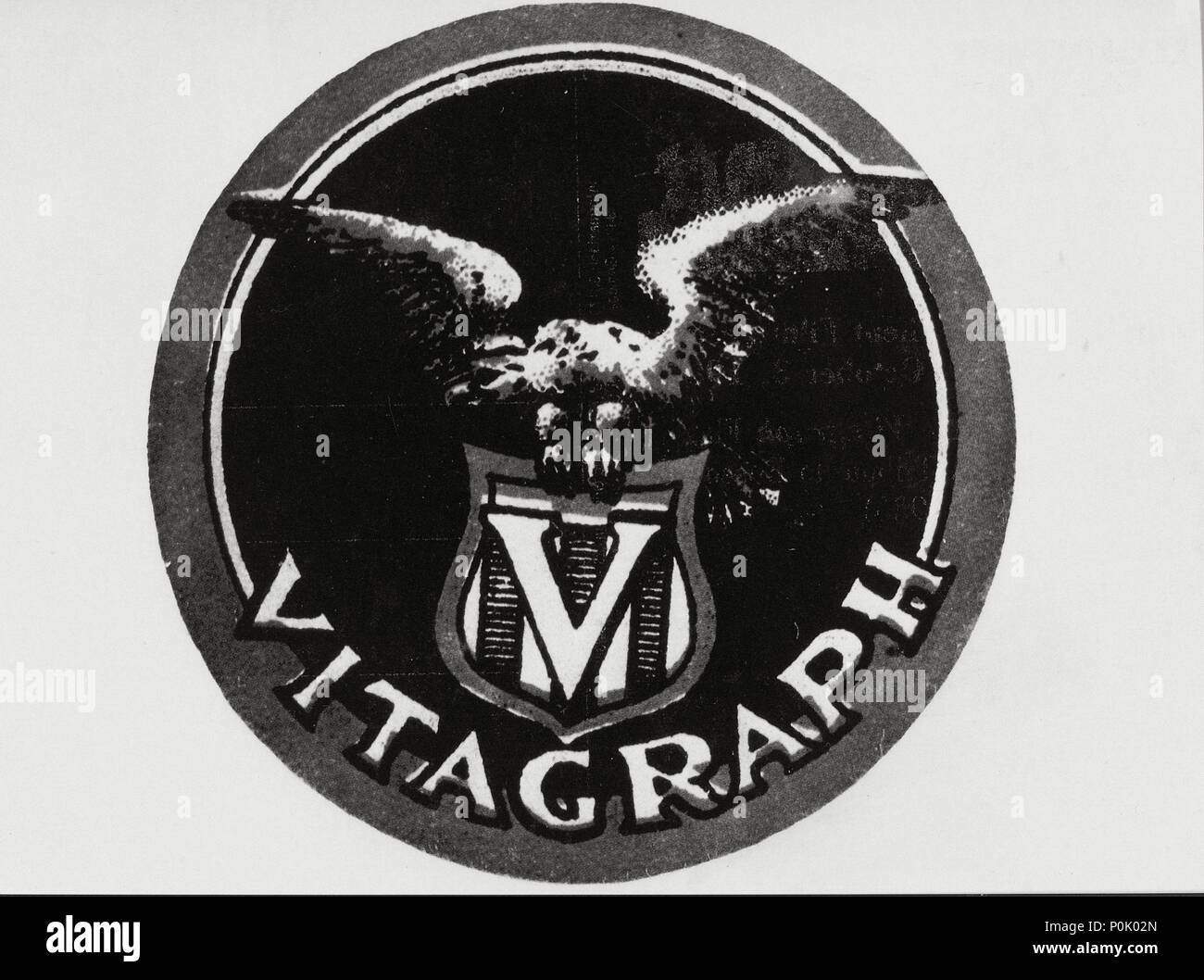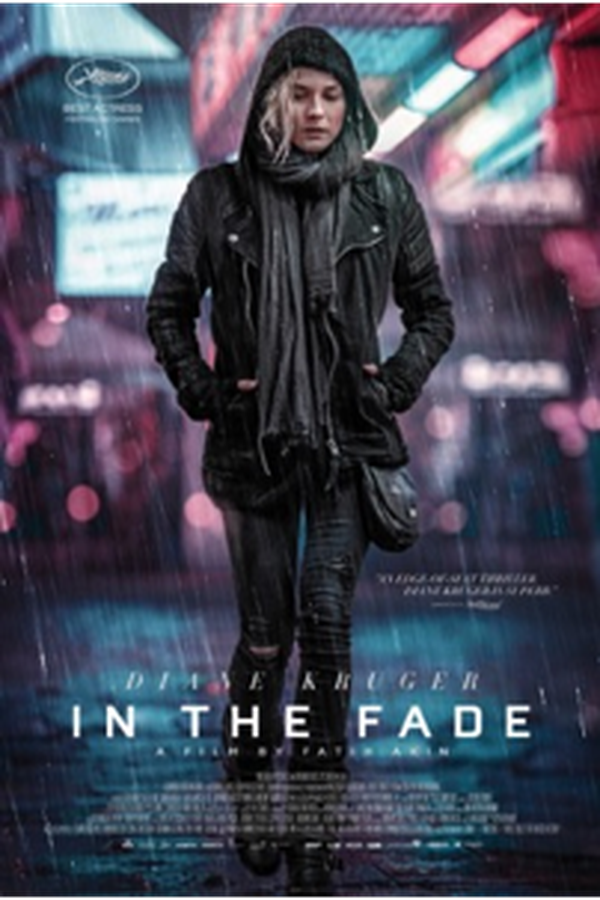
The Baader Meinhof Complex 2009
Directed by

Uli Edel
Made by

Vitagraph Films
Test your knowledge of The Baader Meinhof Complex with our quiz!
The Baader Meinhof Complex Plot Summary
Read the complete plot summary and ending explained for The Baader Meinhof Complex (2009). From turning points to emotional moments, uncover what really happened and why it matters.
The narrative unfolds on a nude beach in Germany during the late 1960s, as we are introduced to Ulrike Meinhoff, a well-respected journalist alongside her family. The tension escalates when Meinhoff and her husband attend a party where she reads an article detailing the injustices of the Iranian Government. The arrival of the Shah of Persia in Berlin incites a rally that splits the crowd; some people protest against the regime, while others express their support. As the protest intensifies, it turns violent, with Iranian backers clashing against innocent German protesters, resulting in injuries and even a fatality.
In a subsequent scene, Meinhoff engages in a heated debate on television, defending the protesters as she advocates for their cause, a broadcast that catches the attention of Gudrun Ensslin, another passionate activist. Ensslin articulates her beliefs about the corruption of American Imperialism to her parents, all while Meinhoff discovers her husband in an affair.
Next, we meet Andreas Baader, the leader of a revolutionary group who labels themselves the Red Army Faction (RAF). Their audacious beginnings include orchestrating a bombing in a department store, igniting a series of demonstrations and protests, particularly among the youth in West Germany, led by Rudi Dutschke. The stakes rise when Dutschke narrowly survives an assassination attempt by someone linked to the Springer Group, which has ties to the government, resulting in an uproar at the group’s headquarters.
The narrative progresses with Meinhoff eavesdropping on her parents’ astonished discussions about Ensslin’s radical actions. During a visit to Ensslin in jail, Meinhoff learns of her unwavering commitment to opposing the German State. We also encounter Peter Boock, an activist who suffers brutal treatment in jail; soon, the RAF finds a home base for their operations.
Amidst political turmoil, Baader and Ensslin undertake a journey to Italy in 1970, where they consult with their lawyer regarding their return to Germany, acquiring weapons and money to fuel their revolution. Upon their return, they crash at Meinhoff’s residence, declaring their intent to rectify the political landscape or perish in the effort. A gripping moment occurs when Baader is arrested during a routine traffic stop, prompting Ensslin to orchestrate his escape in an audacious plan accompanied by Meinhoff.
The publicized escape labels Baader, Ensslin, and Meinhoff as terrorists, prompting their escape to Jordan for military training. However, tensions among the group escalate, particularly with Meinhoff’s partner, who opts to abandon the revolutionary cause. Following their training, they execute a series of bank heists, gaining infamy and support among the German populace. The film captures this crucial turning point, as their actions ignite a series of violent confrontations with the police, leading to fatalities during a botched robbery.
The narrative soon pivots to the drastic measures taken by the German government, leading to the RAF members’ imprisonment and isolation. The somber events of the Munich Olympic Games underscore the violent reality of their cause. As the story continues, the remaining members, now facing dire consequences, attempt a hunger strike to advocate for their treatment as political prisoners, further highlighting the grave situation within the prison system.
Amid palpable tension, Holger Meins, a fellow member, succumbs to neglect as he dies in confinement. The story continues with failed attempts at liberation, missed opportunities for trials, and the group’s deteriorating morale. The film further reveals the psychological struggles Meinhoff faces, culminating in her tragic death under suspicious circumstances, which is ruled a suicide.
As the narrative reaches February 1976, the urgency for survival grips the members of the RAF. With plans of a mass kidnapping to secure their freedom, tensions rise. The tale crescendos into chaos as external pressures mount, leading to catastrophic betrayals and a bloody resolution that sees all RAF members in prison brutally murdered.
The haunting conclusion captures the grim legacy of the RAF, illustrating the inescapable cycle of violence as the next generation of revolutionaries carries the mantle forward, leaving a chilling impression about the lengths individuals will go to for their beliefs.
The Baader Meinhof Complex Timeline
Follow the complete movie timeline of The Baader Meinhof Complex (2009) with every major event in chronological order. Great for understanding complex plots and story progression.
Introduction at the Nude Beach
The narrative unfolds on a nude beach in Germany during the late 1960s. Here, we are introduced to Ulrike Meinhoff, a respected journalist, as she enjoys time with her family in a seemingly tranquil setting.
Article Reading at the Party
At a party attended by Meinhoff and her husband, she reads an article detailing the pervasive injustices of the Iranian Government. This act sparks conversations about their political responsibilities and the international ramifications of their actions.
The Rally for the Shah of Persia
The arrival of the Shah of Persia in Berlin triggers a rally that deeply divides the crowd. Protesters clash with supporters of the regime, leading to a violent confrontation that results in injuries and even a fatality among protestors.
Televised Debate
Ulrike Meinhoff takes part in a heated television debate where she staunchly defends the protesters. Her impassioned words resonate with many, capturing the attention of like-minded activists, including Gudrun Ensslin.
Ensslin's Activism
Gudrun Ensslin, motivated by her beliefs, passionately discusses the dangers of American Imperialism with her parents. Meanwhile, Meinhoff faces personal turmoil upon discovering her husband’s infidelity, prompting her further into activism.
Andreas Baader and the Creation of RAF
Andreas Baader emerges as the leader of the revolutionary group known as the Red Army Faction (RAF). Their audacious start includes a bombing at a department store, which stirs up widespread protests among West German youth.
Assassination Attempt on Rudi Dutschke
The political tumult grows as Rudi Dutschke narrowly survives an assassination attempt linked to the Springer Group, which has connections to the government. This event causes massive civil unrest and protests across the country.
Meinhoff's Visit to Ensslin
During a visit to Gudrun Ensslin in jail, Ulrike Meinhoff learns about Ensslin's unwavering commitment to fight against the German State. This reinforces Meinhoff's resolve to continue her own activist journey, drawn deeper into the struggle.
Journey to Italy
Baader and Ensslin travel to Italy in 1970 to strategize with their lawyer regarding their return to Germany. This trip is crucial as they procure weapons and finances to bolster their revolutionary activities upon their return.
Baader's Arrest
Upon returning to Germany, Baader is arrested during a routine traffic stop, sending shockwaves through the RAF. Ensslin devises a daring rescue plan for Baader, showcasing their determination to reclaim their freedom.
Escape to Jordan
Following a successful publicized escape, Baader, Ensslin, and Meinhoff flee to Jordan for military training. This move highlights their commitment to wielding power through revolutionary means, despite growing tensions among group members.
Bank Heists and Infamy
Back in Germany, the RAF executes a series of bank heists, which earns them notoriety but also escalates violence during confrontations with police. Their infamy grows as the public's response is mixed, igniting deep divisions in society.
Government Crackdown
In response to the rising violence, the German government implements severe measures against the RAF members. This results in many activists being imprisoned and isolated, showcasing the government's desperation to restore order.
Munich Olympic Games
The Munich Olympic Games serve as a stark reminder of the violent reality surrounding the RAF's cause. The events highlight the tragic outcomes of their militant actions and deepen the public's fear and resentment towards radical movements.
Tragic End for Meinhoff
Amidst growing tensions and hopelessness, Ulrike Meinhoff succumbs to her struggles and dies under suspicious circumstances, officially ruled a suicide. Her death signifies a heartbreaking conclusion to a tumultuous journey of activism and conflict.
The Baader Meinhof Complex Characters
Explore all characters from The Baader Meinhof Complex (2009). Get detailed profiles with their roles, arcs, and key relationships explained.
Ulrike Meinhoff (Martina Gedeck)
Ulrike Meinhoff is portrayed as a complex character, transitioning from a respected journalist to a prominent figure in the Red Army Faction. Her keen intellect and strong convictions drive her activism, yet she grapples with personal turmoil, including her husband's infidelity. Her tragic fate underscores the profound psychological toll of her revolutionary journey.
Gudrun Ensslin (Johanna Wokalek)
Gudrun Ensslin is depicted as a passionate and articulate activist, deeply committed to opposing what she perceives as systemic injustices. Her strong rhetoric and rebellious spirit attract attention from both allies and adversaries. However, her resolve is tested as her actions lead her and those around her into increasingly dangerous situations.
Andreas Baader (Moritz Bleibtreu)
Andreas Baader is portrayed as the charismatic leader of the Red Army Faction, embodying youthful rebellion and revolutionary zeal. He inspires those around him to take action but also faces the consequences of his radicalism. His journey reflects the complexities of leadership within a violent movement, marked by a blend of bravery and hubris.
Holger Meins
Holger Meins is depicted as a fellow RAF member whose tragic demise serves as a grim reminder of the harsh realities faced by political prisoners. His suffering highlights the brutal treatment of activists within the prison system and reflects the dire consequences of their ideology. His character represents the human cost of the radical struggle for change.
The Baader Meinhof Complex Settings
Learn where and when The Baader Meinhof Complex (2009) takes place. Explore the film’s settings, era, and how they shape the narrative.
Time period
Late 1960s to February 1976
The narrative spans from the late 1960s through February 1976, a period marked by political upheaval and social unrest in West Germany. This era witnessed protests against imperialistic influences and domestic state violence, reflecting broader global movements for justice. The Munich Olympic Games highlight the tensions and violent reactions surrounding their revolutionary activities.
Location
Germany, Italy, Jordan
The film predominantly takes place in Germany, showcasing its tumultuous political landscape in the late 1960s. Key scenes unfold on a nude beach, at protests, and within the confines of jail, illustrating the struggle against oppressive regimes. Italy serves as a crucial waypoint for the revolutionaries, symbolizing a strategic hub for their plans, while Jordan becomes significant for military training.
The Baader Meinhof Complex Themes
Discover the main themes in The Baader Meinhof Complex (2009). Analyze the deeper meanings, emotional layers, and social commentary behind the film.
🪧
Political Activism
The film delves into the fervent political activism of the Red Army Faction, highlighting the extremes to which individuals would go for revolutionary change. Characters such as Ulrike Meinhoff and Gudrun Ensslin embody the clash between ideological beliefs and the realities of violence and oppression. The narrative explores the cost of these beliefs on personal relationships and societal stability.
⚖️
Justice and Injustice
Themes of justice and injustice permeate the film, with activists fighting against perceived governmental corruption and imperialism. The brutal treatment of political prisoners and the tragic death of Holger Meins amplify the struggles for justice within the flawed legal system. The narrative raises uncomfortable questions about the morality of revolution and the consequences of state repression.
💔
Tragedy
Tragedy plays a vital role in the story, as the leading figures face devastating consequences for their ideologies and actions. The film presents the emotional toll on characters as they navigate betrayal, loss, and ultimately death. Ulrike Meinhoff's tragic end serves as a poignant reminder of the personal sacrifices made in the name of a seemingly unattainable cause.

Coming soon on iOS and Android
The Plot Explained Mobile App
From blockbusters to hidden gems — dive into movie stories anytime, anywhere. Save your favorites, discover plots faster, and never miss a twist again.
Sign up to be the first to know when we launch. Your email stays private — always.
The Baader Meinhof Complex Spoiler-Free Summary
Discover the spoiler-free summary of The Baader Meinhof Complex (2009). Get a concise overview without any spoilers.
In the restless streets of 1970s West Germany, a nation still haunted by the shadows of its recent past grapples with a surge of ideological fervor. The film paints a stark portrait of a society where lingering Nazi legacies clash with the pervasive reach of American culture, creating a volatile atmosphere that fuels dissent. Against this backdrop, a group of disillusioned youths begins to coalesce around a shared conviction that the state has become a new kind of oppression, setting the stage for a dramatic exploration of radical politics and personal conviction.
At the heart of the story are three compelling figures whose lives intersect in the crucible of rebellion. Andreas Baader emerges as a charismatic, impetuous leader whose magnetic presence draws others into a dangerous vision of change. Ulrike Meinhof, a respected journalist turned activist, brings intellectual rigor and moral urgency to the movement, questioning the media’s role in shaping public conscience. Gudrun Ensslin provides a fiercely idealistic counterpoint, driven by a deep‑seated resentment toward both domestic authoritarianism and foreign influence. Their differing backgrounds and motivations create a tense, often volatile dynamic that propels the narrative forward.
Opposite the insurgents stands a determined law‑enforcement figure, Horst Herold, whose dogged pursuit of the burgeoning threat underscores the film’s cat‑and‑mouse tension. His methodical approach and growing obsession with understanding the perpetrators highlight the blurred lines between justice and retaliation. The chase itself becomes a study in psychological warfare, reflecting the larger societal struggle to define order amidst upheaval.
Stylistically, the film balances gritty realism with a lingering sense of inevitability, employing stark cinematography and a muted color palette that mirrors the bleak moral landscape. The tone remains tense and contemplative, inviting viewers to linger on the uneasy coexistence of idealism and violence without revealing the eventual outcomes. Through atmospheric detail and nuanced character work, the story sets the stage for a compelling examination of how far individuals will go when confronted with a world they perceive as fundamentally broken.
Can’t find your movie? Request a summary here.
Movies with Similar Twists and Themes
Uncover films that echo the narrative beats, emotional arcs, or dramatic twists of the one you're exploring. These recommendations are handpicked based on story depth, thematic resonance, and spoiler-worthy moments — perfect for fans who crave more of the same intrigue.
Featured on this page

What's After the Movie?
Not sure whether to stay after the credits? Find out!
Explore Our Movie Platform
New Movie Releases (2025)
Famous Movie Actors
Top Film Production Studios
Movie Plot Summaries & Endings
Major Movie Awards & Winners
Best Concert Films & Music Documentaries
Movie Collections and Curated Lists
© 2025 What's After the Movie. All rights reserved.






